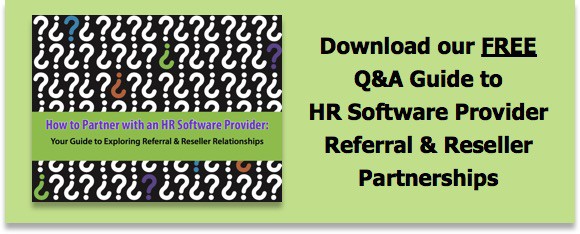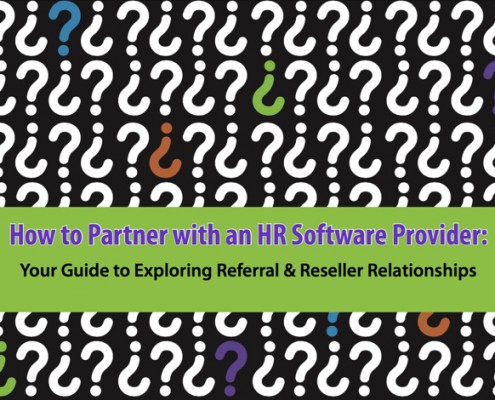5 Pro Tips for Quickly Pivoting to a Virtual Employee Onboarding Process
The new normal of living amidst the COVID-19 global pandemic is causing many employers to adopt new business processes…and to adopt them quite quickly.
For those organizations who are fortunate enough to continue hiring new employees, one of those business processes is to learn how to correctly onboard remote employees in a distributed workforce.
A hastily created employee onboarding process will put new hires at risk of feeling disconnected from their work and organization. On the other hand, a productive virtual employee onboarding program will forge a connection between the new teammate and the organization; thereby, positively contributing to employee satisfaction and the goals of the organization despite the uncertainty and hardship attributable to our current coronavirus reality.
Are you ready to pivot to a distributed workforce? Whether virtual employee onboarding is a brand new practice at your company, or you’re just looking for ways to fine tune employee onboarding for distributed workforces, you’ve come to the right place. In this post, I’ll discuss five best practices for quickly pivoting to a virtual employee onboarding process.
1 – Create a “remote-first” pre-boarding experience
With so much uncertainty on everyone’s mind, your new hire’s interactions with your organization in the days leading up to his start date shouldn’t further increase his anxiety. Make a toolkit of digital assets to share with a new teammate to make sure he feels adequately prepared and informed on day one. Here are some ideas:
- Provide an organizational chart listing all employee names, titles and the hierarchy of the management structure. If you are a part of a very large organization, then a chart of the new employee’s department and/or division may be sufficient.
- Create a task list or training schedule for the new hire’s first few days on the job. Create this in a shared document (e.g. Google Docs) that can be edited on-the-fly to include additional tasks as time progresses, as well as hyperlinked resource documents. With this approach, the employee can follow links to conduct further research to acquaint himself with your company and its organizational knowledge as his schedule permits.
- Task relevant co-workers with creating video welcome messages to be shared with the new employee in the days leading up to the first day. We use a variety of tools at ExactHire (ranging from completely free to very affordable) such as video capture on our smartphones, and video applications like Soapbox, Vidyard and Camtasia.
- Share a short, hyperlinked list of your company’s social media profiles with the new hire, as well as expectations about whether he is likely to be bombarded by social media invitation requests in his first week (as this can be a common way for remote workers to connect with one another).
- Make it clear what equipment will be provided by the company (and by what date), and/or whether the new hire is responsible for bringing any of his own devices to his remote workstation. Ensure that all devices are accompanied by robust instructions on how to use and/or setup appropriate security protocols for effective work within the organization.
2 – Leverage the unique onboarding resources now available to your organization
While social distancing has caused many of us to approach the work setting in dramatically different ways, it has also led to the installation of a handful of new laws and limited regulations meant to help the American working population and employers cope with this crisis. Aside from new laws such as the Families First Coronavirus Response Act (FFCRA) and the Coronavirus Aid, Relief, and Economic Security (CARES) Act, the Department of Homeland Security (DHS) has also recently relaxed its normal requirements for Form I-9 compliance when hiring new employees. This change will help employees who have never hired remote workers to examine and temporarily approve employment eligibility documentation with confidence.
In particular, DHS has “[deferred] the physical presence requirements associated with Employment Eligibility Verification (Form I-9) under Section 274A of the Immigration and Nationality Act (INA). Employers with employees taking physical proximity precautions due to COVID-19 will not be required to review the employee’s identity and employment authorization documents in the employee’s physical presence.”
However, not all employers meet the criteria necessary for taking advantage of the option to initially virtually examine new hire documentation. In fact, only employers who have gone 100% remote for all employees may utilize this temporary flexibility in document examination. For more details on which organizations qualify and what documentation is necessary to participate, check out this recent Forbes article.
3 – Make a short list of near-term new hire expectations
To make this pivot toward remote onboarding manageable and relatively fast, focus on only the absolutely critical expectations that you need all new hires to know right from the start. In doing so, make sure you communicate that the current situation necessitates focusing on the “must-knows” initially, but that icing-on-the-cake knowledge and nurturing will be sure to follow as things calm down a bit.
Your new hire will appreciate your candor, and be more likely to establish trust in the organization early because it is helping to flesh out priorities to ensure the new hire’s success.
Here are some examples of employee expectations that may resonate with your team. Be sure to educate your new hire about each of the items below that may be important for his work.
- Training prerequisites that must be completed before certain aspects of a job can be endeavored (e.g. safety, password security protocol)
- Preferred methods for co-workers to communicate with each other (e.g. email, phone, Slack, text, video conference, project management tool comments)
- Mission-critical reports and metrics that must be updated…and with what frequency
Remember that while your ability to equip your new employee with these essential bits of information can shorten his learning curve and improve outcomes, don’t forget that our normal isn’t so normal right now. In fact, it reminds me of an unidentified quote that my co-worker shared on our Slack channel today…one that very appropriately describes the current plight for many of America’s remote workers:
“You’re not working from home; you are at your home during a crisis trying to work.”
There’s a place for grace right now.
4 – Communicate your culture
While company culture can be somewhat nebulous to describe to others, as it is often something experienced for one’s self in-person, there’s no doubt that remote cultures exist, too.
However, it may take longer to assimilate remote workers to cultural norms if you don’t take strides to help them take seed early. Here are some ways to make your virtual culture more quickly tangible:
- Facilitate video introductions between a new hire and fellow department members and other key co-workers. Make sure all teammates take a turn to introduce themselves, explain their respective roles, and offer suggestions on how they interface with the new employee in his job.
- Recognize that your organization likely has a multitude of multimedia approaches for communication in different situations. Create a “cheat sheet” of common scenarios to give your new employees a head start:
- Protocol for out of office messages
- Appropriate channels for different types of Slack posts
- Frequency for co-worker video meet-ups and the purpose of each (e.g. is this a project-related call or a virtual happy hour?)
- General guidelines on how quickly to respond to different inquiries and requests (make sure to allow for time zone differences between co-workers)
- Location of a schedule of regular working hours for different employees
- Protocol on whether to use one’s video camera on conference calls (is it preferred or required by various departments?)
- Acceptable format for email signatures
- Preferred software applications for different assignments (e.g. MS Word or Google Docs when both are available?)
5 – Implement employee onboarding software for remote hiring success
Depending on the industry in which you work, you likely use a set of software applications critical to the productivity of your business–it’s your tech stack. From CRMs to POS systems, and project management suites to ticketing portals, these varied forms of technology are essential to different industries because they leverage technology to automate and improve repetitive, and perhaps otherwise manual tasks for different employers.
While health clinics may not need POS systems, and safety equipment manufacturers aren’t desperate for software issue ticketing suites, I will advocate that all employers who are currently hiring should consider employee onboarding software.
Moreover, if you are hiring remote employees, onboarding software gives you a significant competitive advantage as you can improve the new hire user experience (aka first impression) as well as minimize documentation errors.
ExactHire’s OnboardCentric employee onboarding software can be implemented either as a stand-alone solution to meet your urgent onboarding needs; or, as a hiring component integrated with our ExactHire applicant tracking system.
As employers face constantly evolving news related to COVID-19, they are adjusting priorities and re-allocating resources on a daily basis. Our team understands the need for fluidity and responsiveness, and we’re equipped to get you up and running with onboarding software quickly.
To expedite implementation and improve your new hire experience despite the current pandemic, we recommend that you start by implementing required new hire forms (e.g. state tax forms, Form W-4, Form I-9, direct deposit, etc.) and allow us to train supervisors who need access right away.
Then, as demands on your schedule decline, our team is happy to work with you to include non-essential nice-to-have new hire forms, discuss onboarding process best practices and conduct more advanced user training with all of your hiring managers. Our responsive team is ready to work as your partner through this crisis.




